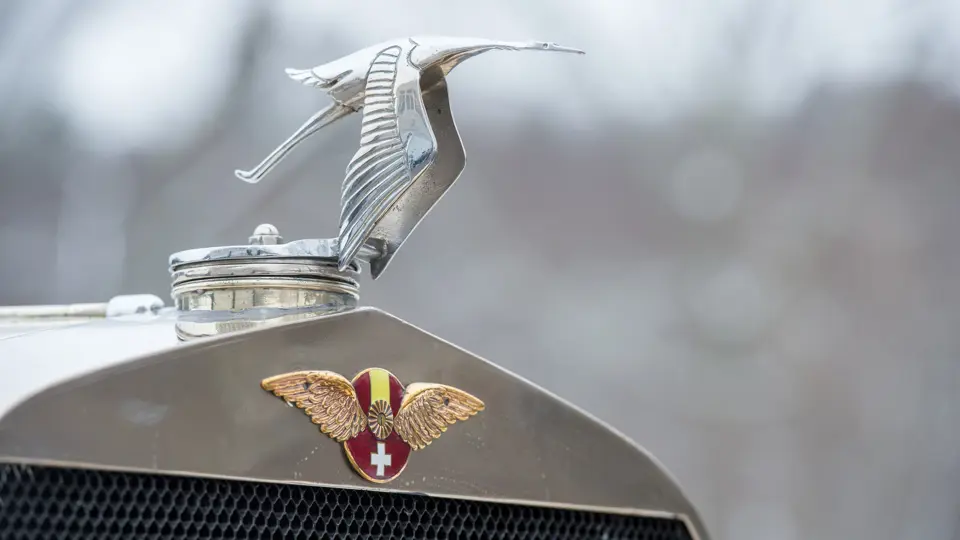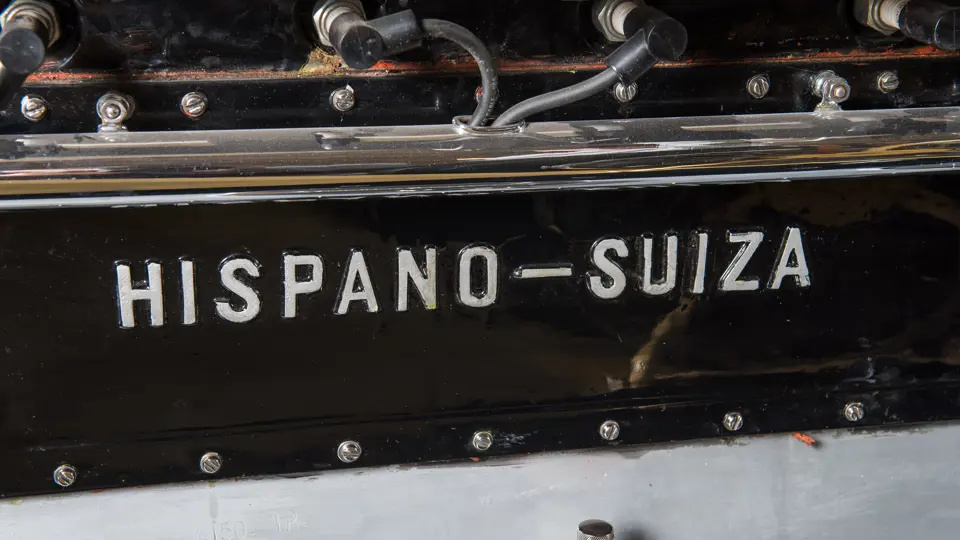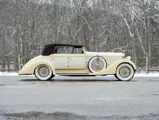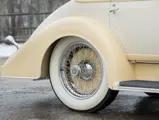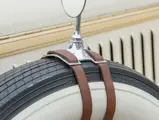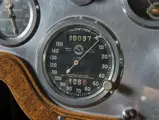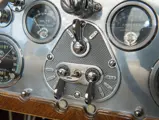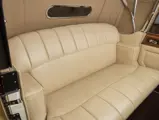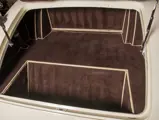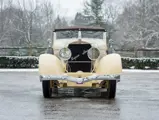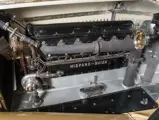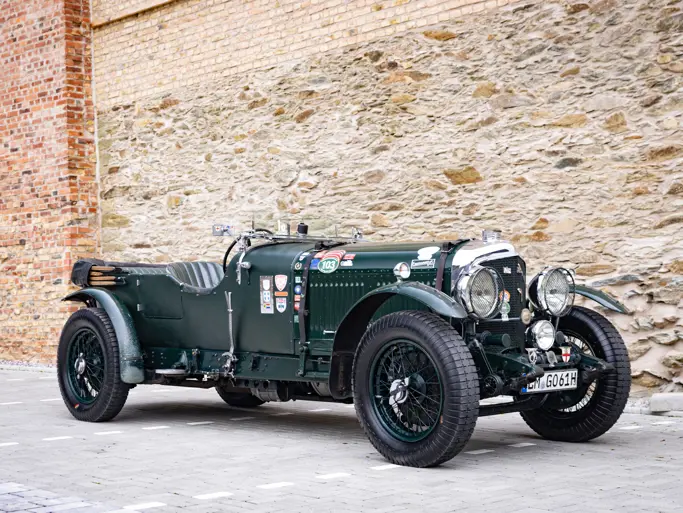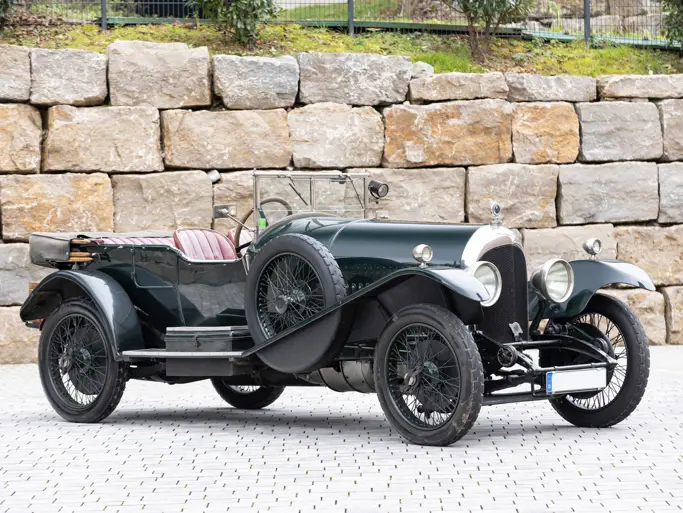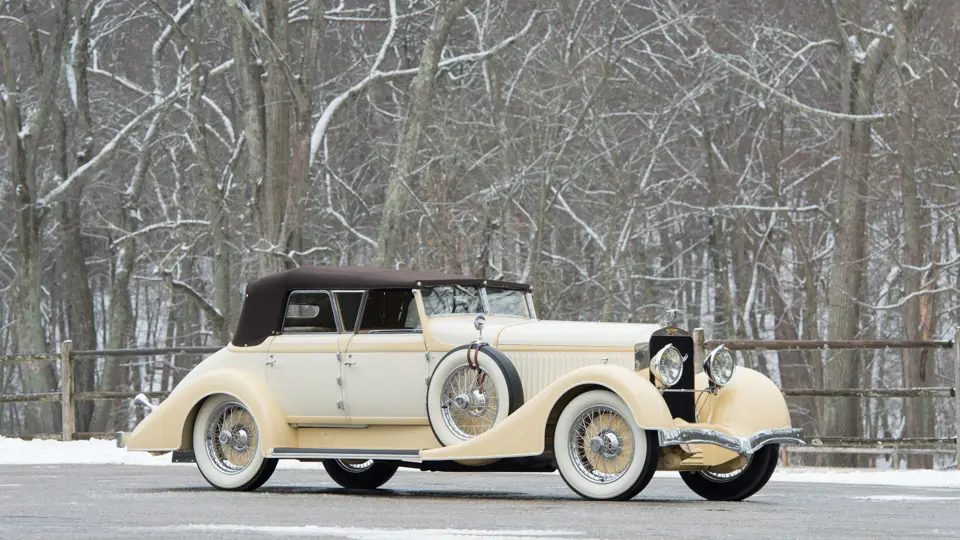
1928 Hispano-Suiza H6C Transformable Torpedo by Hibbard & Darrin
{{lr.item.text}}
$495,000 USD | Sold
{{bidding.lot.reserveStatusFormatted}}
- An H6C, the ultimate six-cylinder Hispano-Suiza
- Delivered new in the U.S.
- Original coachwork designed by Hibbard & Darrin
- Formerly the property of Arturo Keller
160 bhp, 7,983 cc SOHC inline six-cylinder engine, three-speed manual transmission, solid front axle and live rear axle with semi-elliptic leaf springs, and four-wheel servo-assisted mechanical drum brakes. Wheelbase: 146 in.
As the name implies, Hispano-Suiza was born in Spain of the genius of Swiss engineer Marc Birkigt. The most legendary “Hissos” were, however, produced in the factory in France, which opened in 1911. Most significant of the French Hispano-Suizas was the H6 of 1919, which was described by British historian T.R. Nicholson as “the last word in advanced transport for the rich.” Developed from the company’s proven aero engines of World War I, the 6.6-liter, overhead-cam straight six was cast in aluminum, with a fixed head, steel liners, two valves per cylinder, and a seven-main-bearing crankshaft with full lubrication. Mated to a light, rigid chassis, it resulted in outstanding performance, and the servo-assisted brakes with finned aluminum drums assured quick stops.
The H6 was succeeded in 1921 by the H6B, joined in 1924 by the H6C. The latter was the ultimate six-cylinder Hispano-Suiza, intended for high-speed sporting use. With its larger 7.9-liter engine, based upon that of the “Boulogne” racing cars, it was capable of speeds approaching 110 mph, while also carrying the latest luxurious custom coachwork of the day. An ideal aristocrat’s express, it represented the zenith of the line and ranks among the most delightfully excessive automobiles to emerge from France during the 1920s.
The H6C offered here features coachwork by Hibbard & Darrin, the noted Paris coachworks established in 1924 by American expatriate designers Howard “Dutch” Darrin and Thomas Hibbard. Hibbard & Darrin’s most famous product was a four-door convertible dubbed the Transformable Torpedo, the hallmarks of which were a snug-fitting convertible top, which dropped in a “tent flap” to fill the space between the trapezoidal side windows, and a wide beltline molding also seen in other Hibbard & Darrin creations. This body design was utilized on numerous chassis, including the Rolls-Royce of actress Marlene Dietrich, and this particular Hispano-Suiza.
According to the original Hispano-Suiza factory records, this car was delivered new on January 26, 1928, to Clarke D. Pease, the United States distributor, making it surely one of the few H6Cs to have been originally sent stateside. Its first owner was one of the Chopitea brothers, the free-wheeling playboy heirs to a Peruvian sugar fortune, who enjoyed homes throughout the world—one of which, reportedly, served only to hold their suits—and a bevy of fine automobiles, including a succession of Duesenbergs and 12-cylinder Packards. The car later passed to a Mr. Marais, then to a prominent Armenian diamond trader and art collector, Mirant Eknayan. At some point during its early life, the body was updated to its present appearance, including the addition of sweeping, full pontoon fenders and an extension to the rear body, which incorporates a built-in trunk, bringing the body in line with the streamlined look in vogue in the late-1930s.
The car was eventually acquired by noted collector Arturo Keller, of California, and it has since resided in several other prestigious collections. The current owner has installed a new clutch; has fully tuned the engine; has sorted the brakes, steering, and suspension; and has professionally freshened the belt molding and fender doors. It continues to present quite well; all brightwork is in good condition, and the newly installed dark brown canvas convertible top is in excellent shape. The cream-colored leather upholstery and chocolate brown carpets, nicely accented with cream piping, present well, as does the interior wood trim, which provides a stunning contrast to the aluminum instrument panel. Under the hood, all is correct and well-detailed, with the polished aluminum firewall serving as a mirror to the impressive engine.
One of very few H6Cs remaining, and undoubtedly one of the few original U.S.-delivery examples, this spectacular Hispano-Suiza represents a worldwide effort: Swiss engineering, French artistic flair, and American ingenuity combined in a gorgeous Art Deco package.
Please note, this vehicle is titled as 1926.




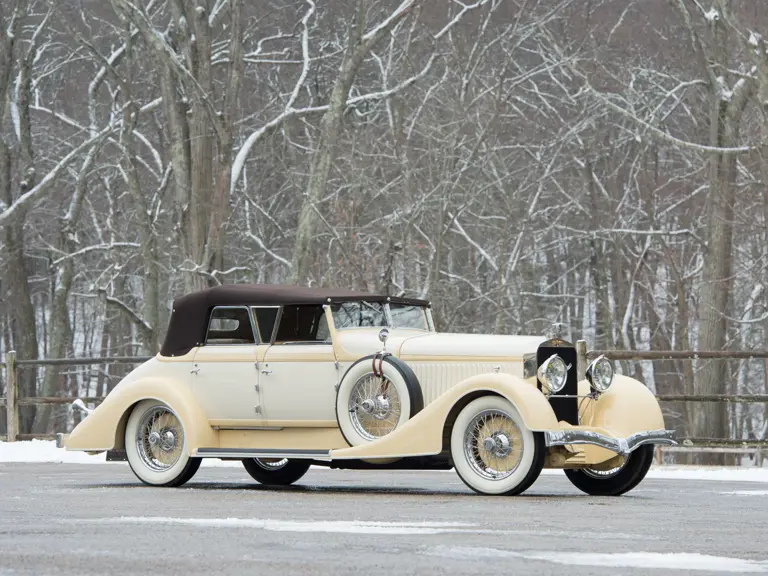
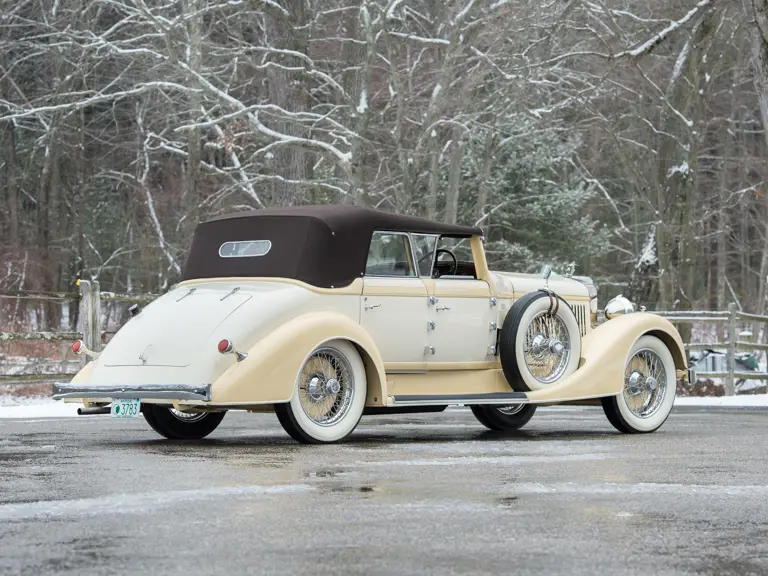
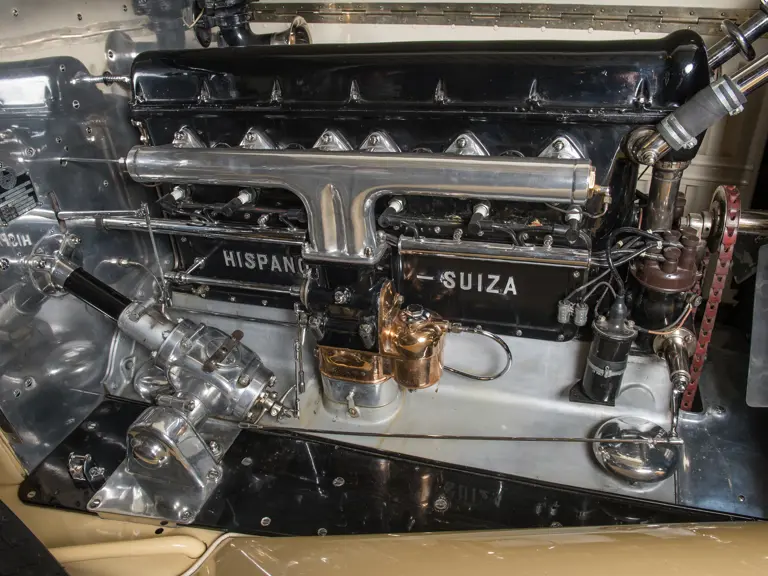
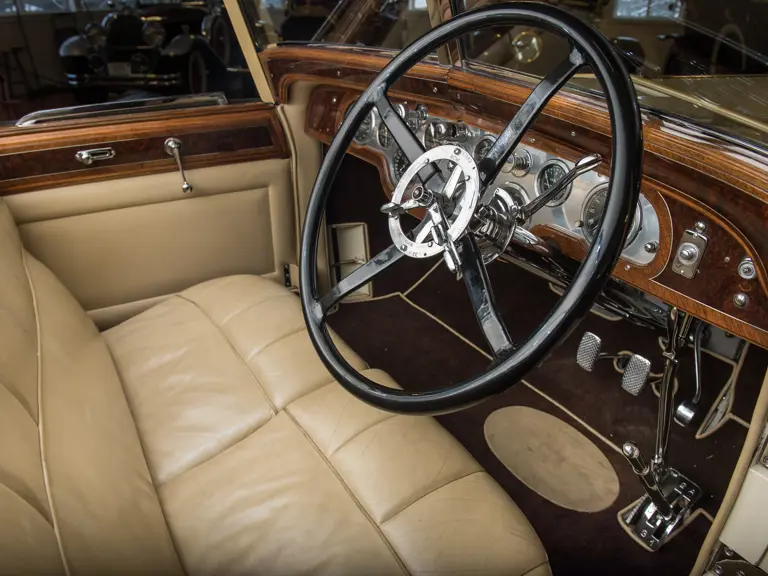

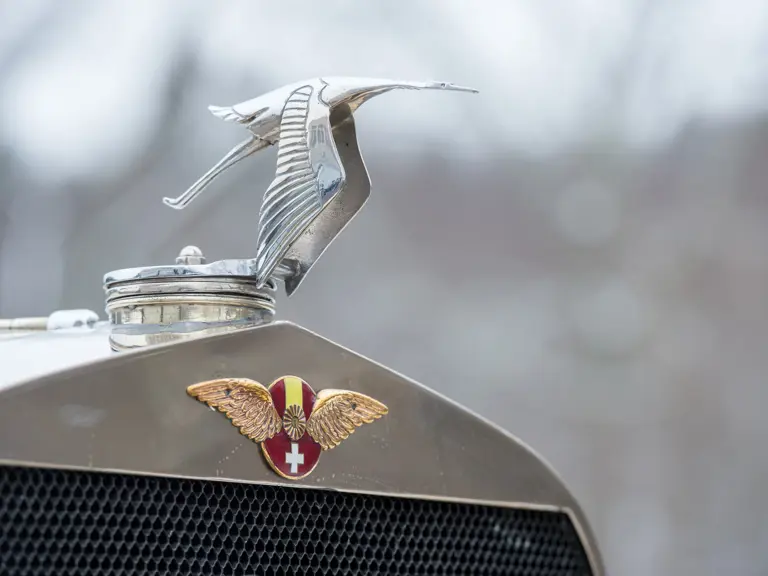
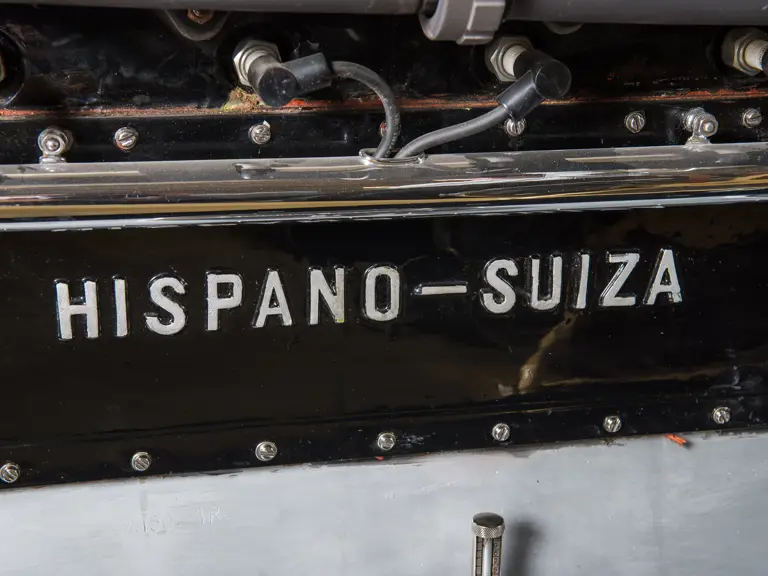


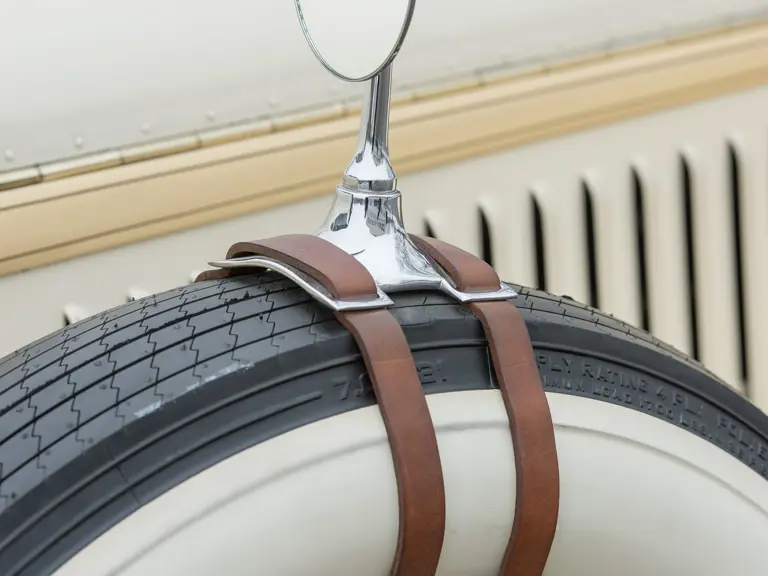
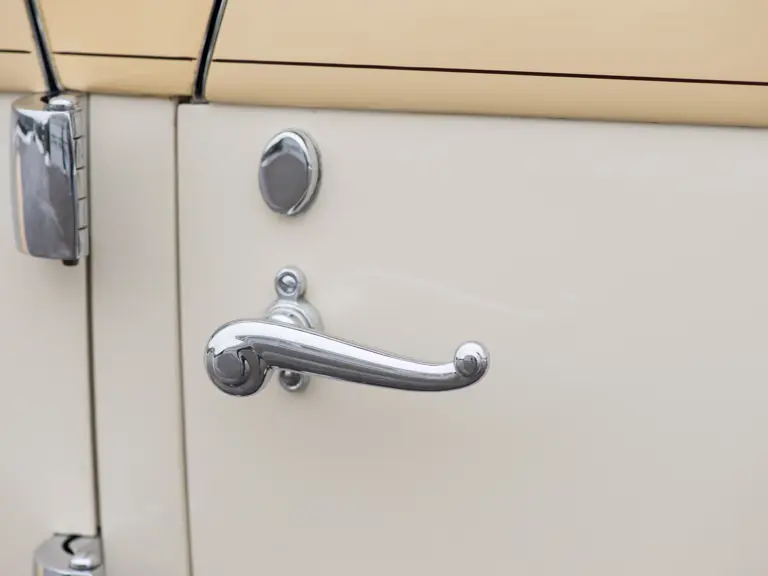

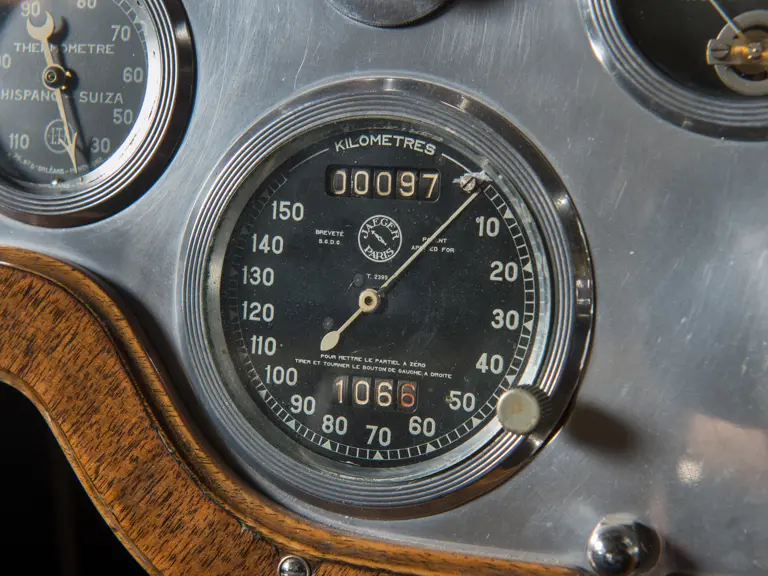
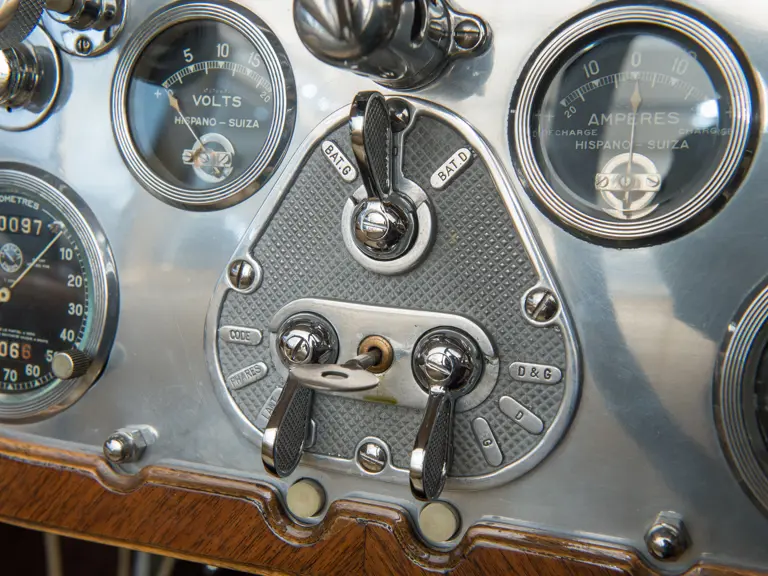
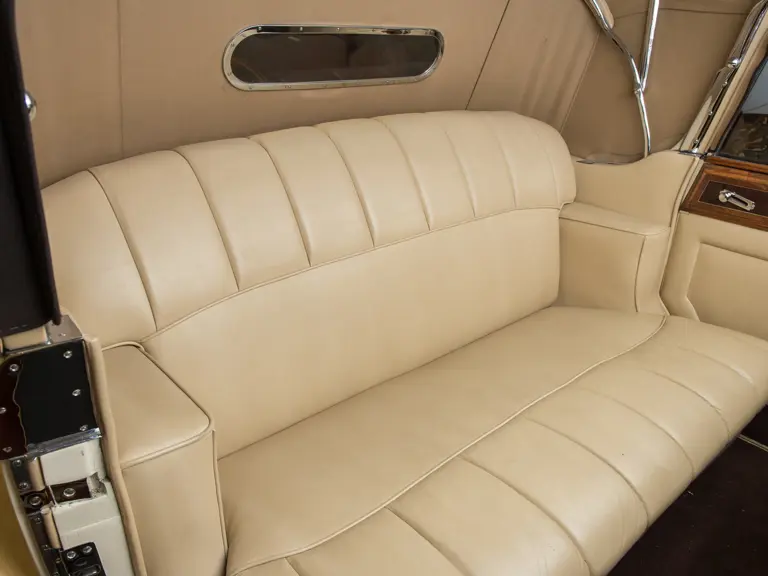
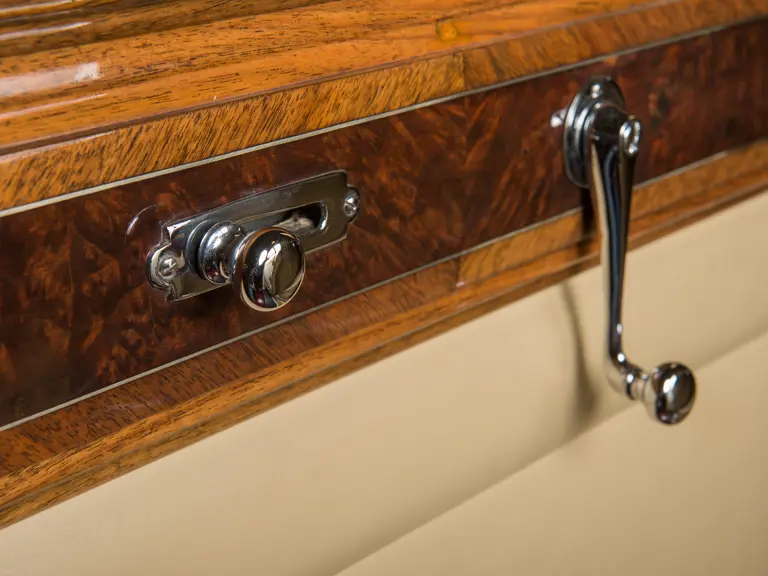
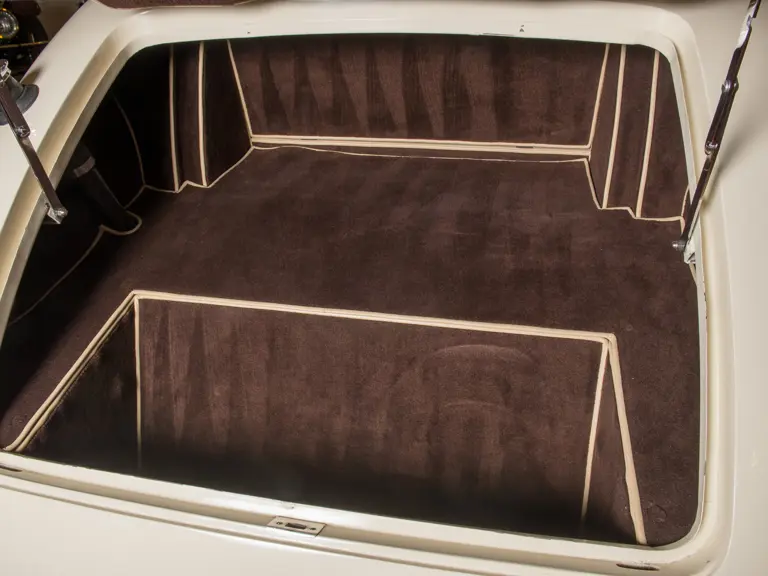

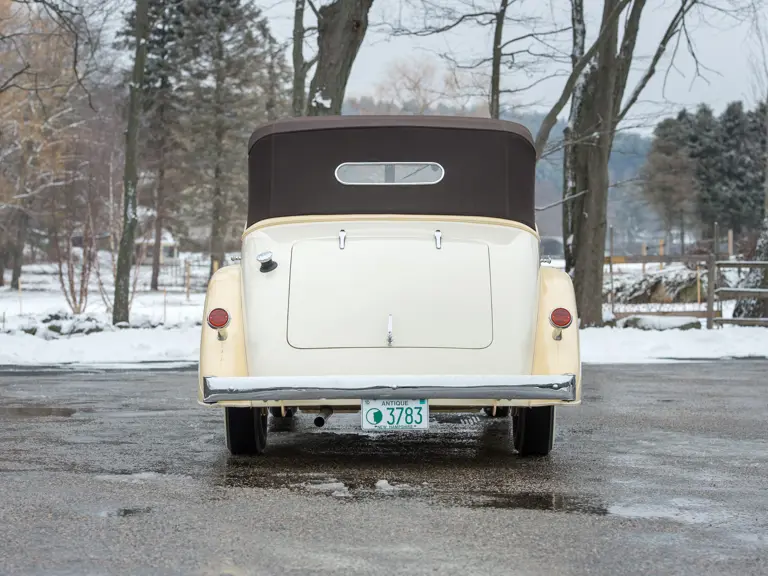

 | Amelia Island, Florida
| Amelia Island, Florida

